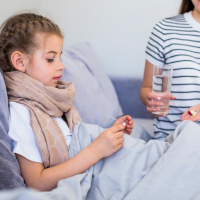
What is the aim of this synthesis?
The aim of this Cochrane qualitative evidence synthesis was to find out how children and young people who have chronic pain and their families: 1) think about chronic pain; 2) live with chronic pain; 3) think of how health and social care services treated their pain; and 4) what they want from services and treatments. To answer these questions, we searched for, analysed and brought together the findings of all the relevant qualitative studies looking at these topics. This qualitative evidence synthesis links to 14 Cochrane Reviews assessing the effect of treatments on children with chronic pain.
What was studied in this synthesis?
Around 20% to 35% of children and young people worldwide have pain lasting 12 weeks or more (we call this chronic pain). It can lead to poorer health, quality of life, and stop them participating in school and social activities. Chronic pain can lead to higher use of healthcare services and treatments. If a child’s chronic pain is not successfully treated it can continue into adulthood. In many countries, there are few services for managing children’s chronic pain and current services are inadequate. United Kingdom and global clinical guidelines for managing chronic pain and 14 recent Cochrane Reviews on treatment effectiveness for children’s chronic pain identified a severe lack of high-quality research to inform chronic pain management in children. In this qualitative evidence synthesis, we pulled together the different findings from published research studies, which asked children with chronic pain and their families about what it is like to live with chronic pain, their experiences of health care or what they want to get from treatments, to try to understand more about children’s chronic pain in order to improve health care. Young people with chronic pain and their families, pain charities, healthcare professionals such as doctors, and research experts worked with us throughout the review to help us make decisions, analyse studies and tell others our findings.
The funder of this research was the National Institute for Health Research in the United Kingdom.
What are the main findings of this synthesis?
We identified 170 eligible studies and included 43 of the most relevant studies, 39 from high-income countries and four from low- to middle-income countries. The included studies involved a total of 633 participants. These studies primarily explored the views and experiences of adolescents with chronic non-cancer pain and their parents in the United Kingdom. Moderate or severe chronic pain negatively affected a child or young person's whole family, family life and their social lives. Children and their families wanted to know the cause of the pain and have it resolved, but they found it difficult to get help and treatments that worked from health services. Sometimes healthcare professionals did not believe the child was in pain or listen to how pain affected them. Some families made many repeated visits to health services seeking a diagnosis and cure. Often families were left to deal with chronic pain on their own, which could negatively impact the whole family. Over time, some children and families realised their pain was unlikely to be cured and so focused on living well with pain or gave up hope of effective treatment.
How up-to-date is this synthesis?
We searched for studies that had been published up to September 2022.

